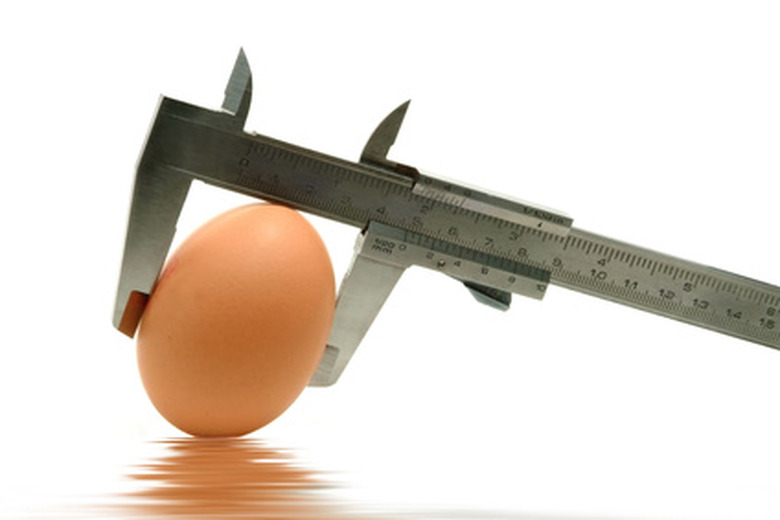Principles Of Vernier Caliper
Vernier calipers are a tool from the caliper family allowing users to measure the inner or outer dimensions of items, and step or hole depths. Created by Pierre Vernier, a French mathematician, properly-calibrated vernier calipers hold a high degree of precision, able to measure tolerances in 0.05mm or 0.002 inches of accuracy. Vernier calipers have four distinct ways to measure distances.
Outer Caliper Jaws
The large outer caliper jaws at the bottom of the tool have flat faces that touch each other when the vernier caliper is in the closed position. The outer caliper jaws wrap around objects and are used to measure outside distances, such as an egg or the length of a square.
Inner Caliper Jaws
The inside caliper jaws, on the top of the tool, appear as a smaller version of the outer caliper jaws. The inner caliper jaws' flat edges face away from each other when the vernier caliper is opened and are used to measure inner distances, such as the inside of a tube.
Depth Probe
The depth probe is a long, flat, thin piece of metal that runs through the center of the caliper and moves out from the body of the vernier calipers when the jaws are opened. The depth probe is used to measure step or hole distances. By placing the flat end of the caliper flush against the upper face of the object being measured, then moving the caliper jaws to lower the depth probe into the object's hole, you can use the scale to read the depth of the step or hole.
Main Scales
Vernier calipers have main scales running along the length of the tool. The scale along one edge of the tool is in inches, while the other side has increments in centimeters. The main scales can be used as a simple ruler.
Reading a Vernier Caliper
Reading a vernier caliper is a multistep process. First, lightly place the jaws or depth probe against the object being measured. As the jaws move along the length of the caliper, a smaller scale called a vernier travels with them. The number on the main scale opposite the zero on the vernier scale is the first part of the measurement.
Next, look at the marks, which are in either millimeters or fractions of an inch, along the length of the vernier scale. By eye, identify the mark on the vernier scale that lines up most accurately with the opposite mark on the main scale. This number is the rest of your measurement.
For example, if the vernier scale's zero lines up with 5.6cm on the main scale, and the 2.4-mm increment aligns most accurately with its opposite main scale mark, the final measurement will be 5.624cm.
